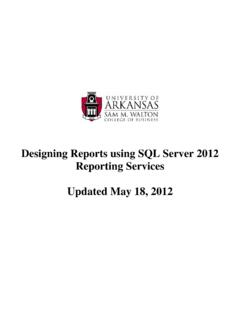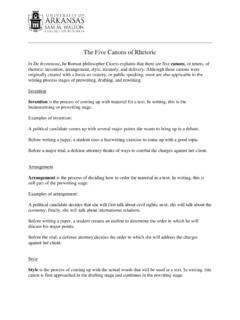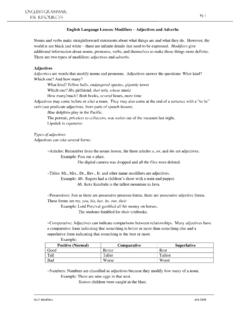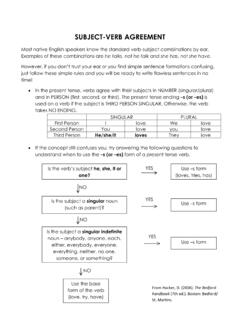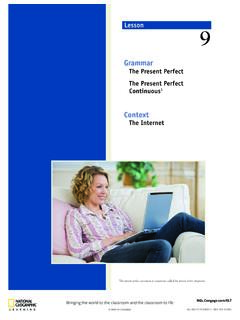Transcription of English Grammar: Pg 1
1 Pg 1 ELL4: Nouns/Pronouns/Articles ehb 2009 English Language Lesson: Verbs Just as nouns, the first of the eight parts of speech, play a key role in a sentence, so do verbs. In this lesson, we ll look at verbs action or being words and the way that they can be changed according to tense. We ll also look at verbals and common verb errors. Verbs There are two types of verbs: action verbs and being verbs. Action verbs tell what something is, was, or will be doing. Examples: Jennifer ate pizza sticks for dinner. Please don t ring the bell so loudly; it hurts my ears. After the cathedral, the tour group will visit the museum. Being verbs (also called state-of-being verbs and linking verbs) indicate that something exists in a form or state.
2 The subjects in being verb sentences aren t doing anything. A being verb tells us what something is, was, or will be. Examples: That dog is covered in fleas. The new prime minister will be good for the country. Where was the missing manuscript? Note: Some verbs can act as either a being verb or an action verb . To determine the difference, ask if the subject is performing the action of the verb . Examples: This salad tastes strange. The sommelier tastes the wine. In the first example, the salad is not performing the tasting; tasting strange is the state of being of the salad. In the second example, the sommelier is performing the action of tasting on the wine, making it an action verb . The rugby team looked exhausted after the match.
3 The curator looked at the statue for a long time before leaving. In the first example, the state of being of the team is exhausted ; they are not performing an action. In the second example, the curator is doing the action of looking. verb Forms and Auxiliary verbs Regular verbs can be conjugated into four forms. These forms are important, since they are the basis for all conjugations. All verbs have an infinitive form or a base form before conjugation. The infinitive form of a verb always begins with a to. Examples: to be, to eat, to smell, to run, to pontificate, to scream, etc. Examples: Infinitive Present Past Present Participle Past Participle To allow Allow(s) Allowed Allowing Allowed To bake Bakes(s) Baked Baking Baked To rejoice Rejoice(s) Rejoiced Rejoicing Rejoiced To snore Snore(s) Snored Snoring Snores To touch Touch(es) Touched Touching Touched English Grammar: ESL Resources Pg 2 ELL4: Nouns/Pronouns/Articles ehb 2009 There are some important things to note.
4 First, present tense has a slight deviation for third person the addition of an s (see the chart under person and number). Second, past and past participle are identical in regular verbs; they are simply the addition of ed to the present form. Third, some verb endings (such as those ending in ch ) add a letter to the present tense a good dictionary will help you identify those. Auxiliary verbs (also called helping verbs) are words which are added to the primary forms to create verb phrases. There are two types of auxiliary verbs: primary and modal. Primary auxiliary verbs: Primary auxiliary verbs have two important properties. They change to match the subject of the sentence, and they can also stand on their own as independent verbs.
5 There are three primary auxiliary verbs: have, do, and be. Do: Do is used to express the negative, provide emphasis, and ask questions: Examples: Hemmingway doesn t live in Cuba anymore. (negative) Does Darren know how to set the Tivo? (question) I do have three puppies for sale. (emphasis) Notice that the auxiliary can be split from the primary verb (#1 ) Have: Have is joined with participles to create the present form of verbs (see below: verb tenses). Have is also combined with modal verbs to express possibility. Example: I have gone to the store five times this week. The unicorn must have been a figment of your imagination. Kaylin must have left the water running. Be: Be verbs are combined with participles to create progressive verbs.
6 (see below: verb tenses). verb Properties In English , verbs change based on how they are used in a sentence. Verbs can be transformed out of their infinitive form according to five properties: tense, mood, person, number, and voice. The transformation all use one of the four verb forms Person and Number A verb changes according to person and number. Person indicates who is doing or being the verb . Number indicates how many are doing or being. The table below is often used to help conjugate verbs according to person and number (pronouns are added as sample subjects): singular plural 1st person 1 person me/I More than one person we/us 2nd person 1 person you More than one person you (all) 3rd person 1 person he/she/it More than one person - they Verbs change according to their person and number.
7 Example (to throw): singular plural 1st person I throw We throw 2nd person You throw You (all) throw 3rd person12 He/she/it throws They throw 1 When conjugating according to person and number, notice that there is a slight deviation for 3rd person present (see above throw versus throws ), but for the remaining conjugations, all of the verbs remain consistent. Pg 3 ELL4: Nouns/Pronouns/Articles ehb 2009 verb tense The tense of a verb indicates when in time the action or being of the verb occurred. Regular verbs in English change their form into six tenses: present, past, future, present perfect, past perfect, and future perfect. Each of the tenses is made up of one of or a combination of the four forms (past, present, past participle, present participle).
8 The first three tenses (past, present, and future) can also take progressive forms. -Present indicates that something occurs or is now, at the current time. Present verbs take the present verb form. Example: I sing in the choir. The lungs take in the air and transport it to the heart. Californians like surfing in the ocean. -Present progressive3 indicates that something is in the act of occurring now. Present progressive takes the present tense to be + present perfect form I am singing in the choir. The lungs are taking in the air and are transporting it to the heart. Californians are liking surfing in the ocean. -Past indicates that something happened at a fixed time before the present. Past verbs take the past form.
9 Example: The horses ate oats some days and grain on others. The band Yellowcard played an amazing show. Cathleen woke from a terrible nightmare. -Past progressive indicates that something occurred over time in the past. Past progressive verbs take the past tense to be + present participle form. The horses were eating oats some days and grain on others. The band Yellowcard was playing an amazing show. Cathleen was waking from a terrible nightmare. -Future indicates that something will happen or be at some time after the present. Future verbs take will + present form OR present tense to be + going to + present form. Example: The surgeon will begin the operation tonight. I am going to clean the garage sometime soon.
10 The barrista will get you some coffee. -Future progressive indicates that something will be happening over time in the future. Future progressive takes will be + present participle OR present tense to be + going to be + present participle. The surgeon will be beginning the operation tonight. I am going to be cleaning the garage sometime soon. The barrista will be getting you some coffee. Note: Note that, in formal English , will is occasionally replaced by shall (Example: The surgeon shall begin the surgery tonight). 2 There are some irregular verbs that do not behave this way.




